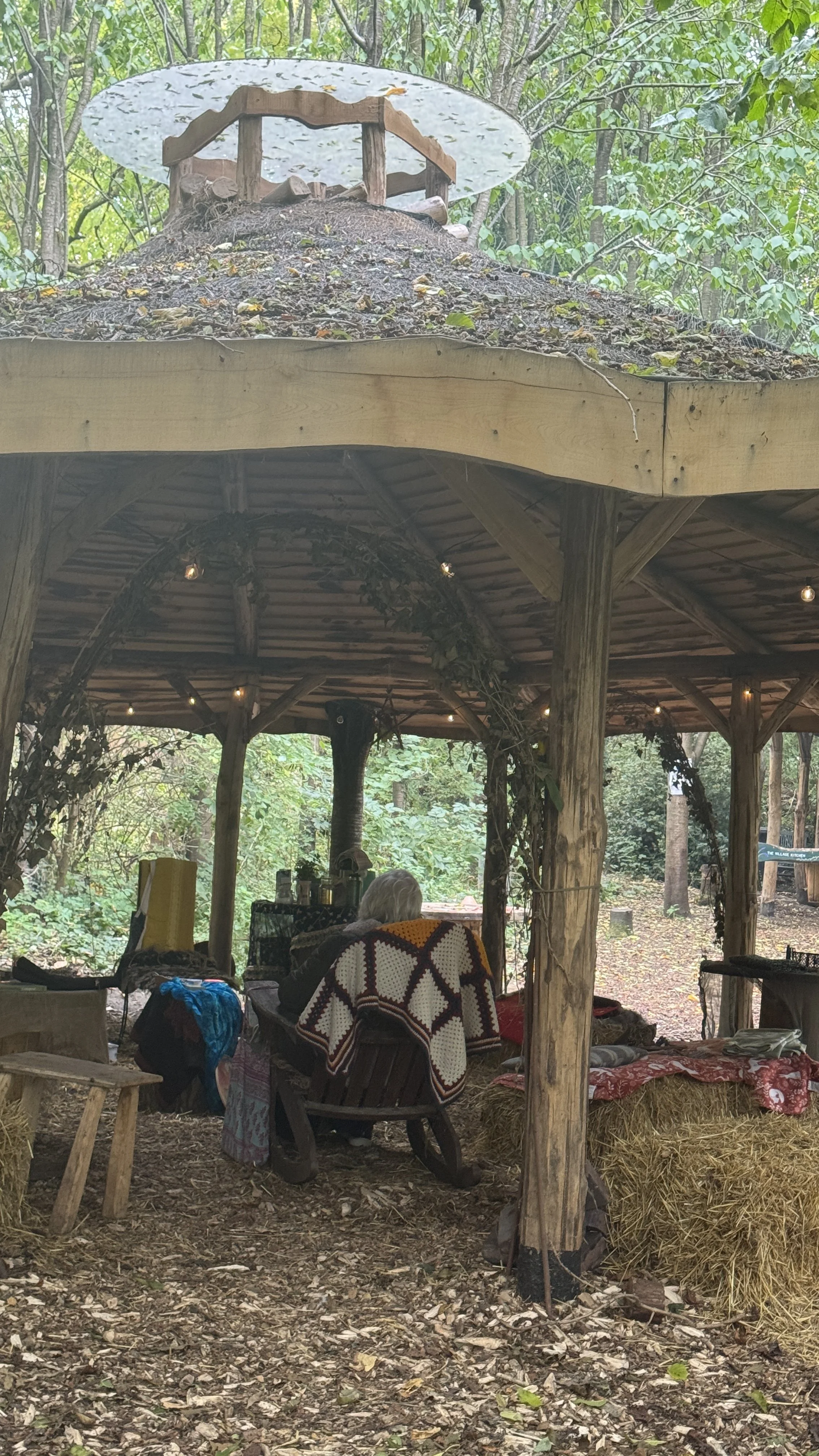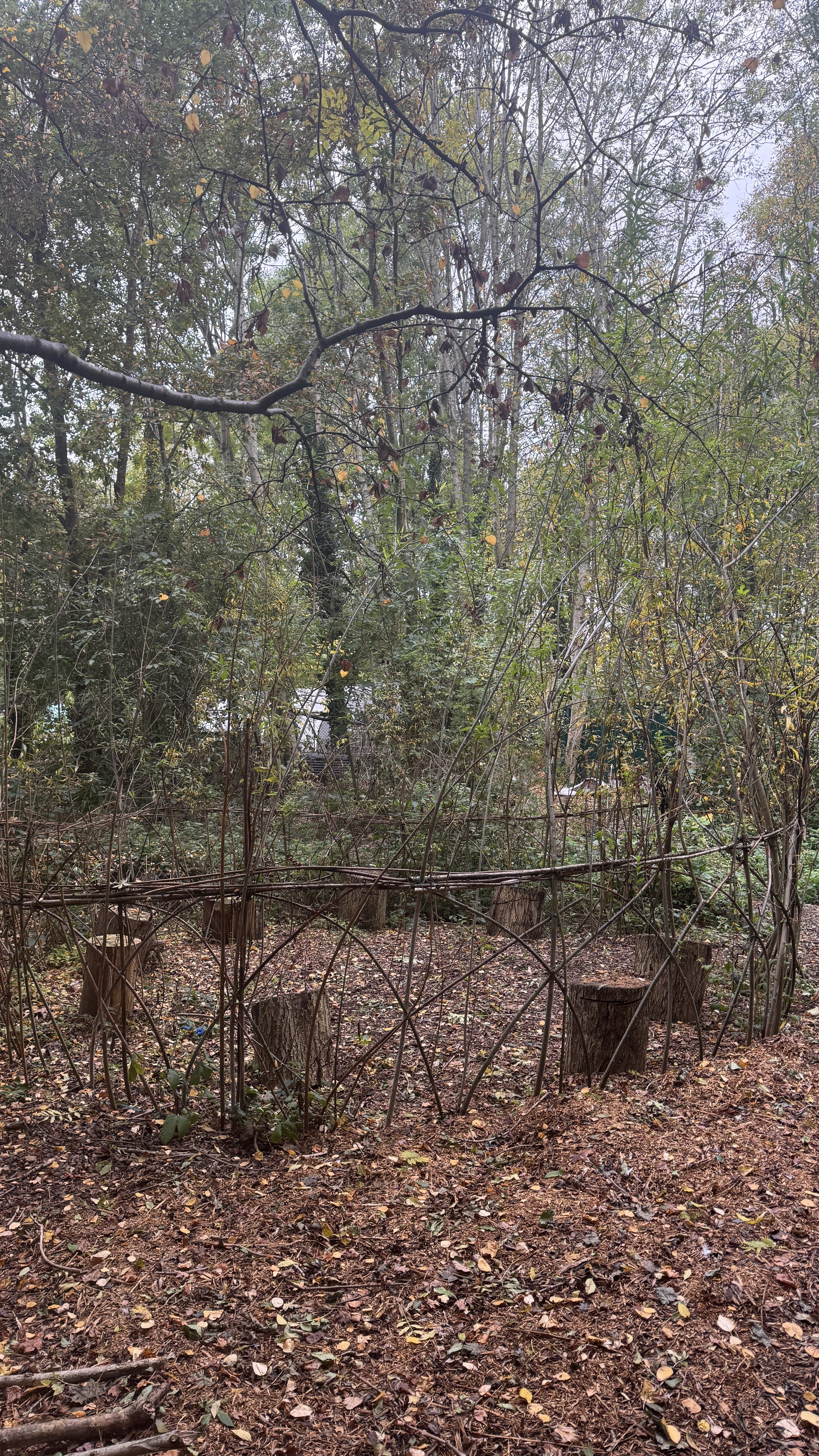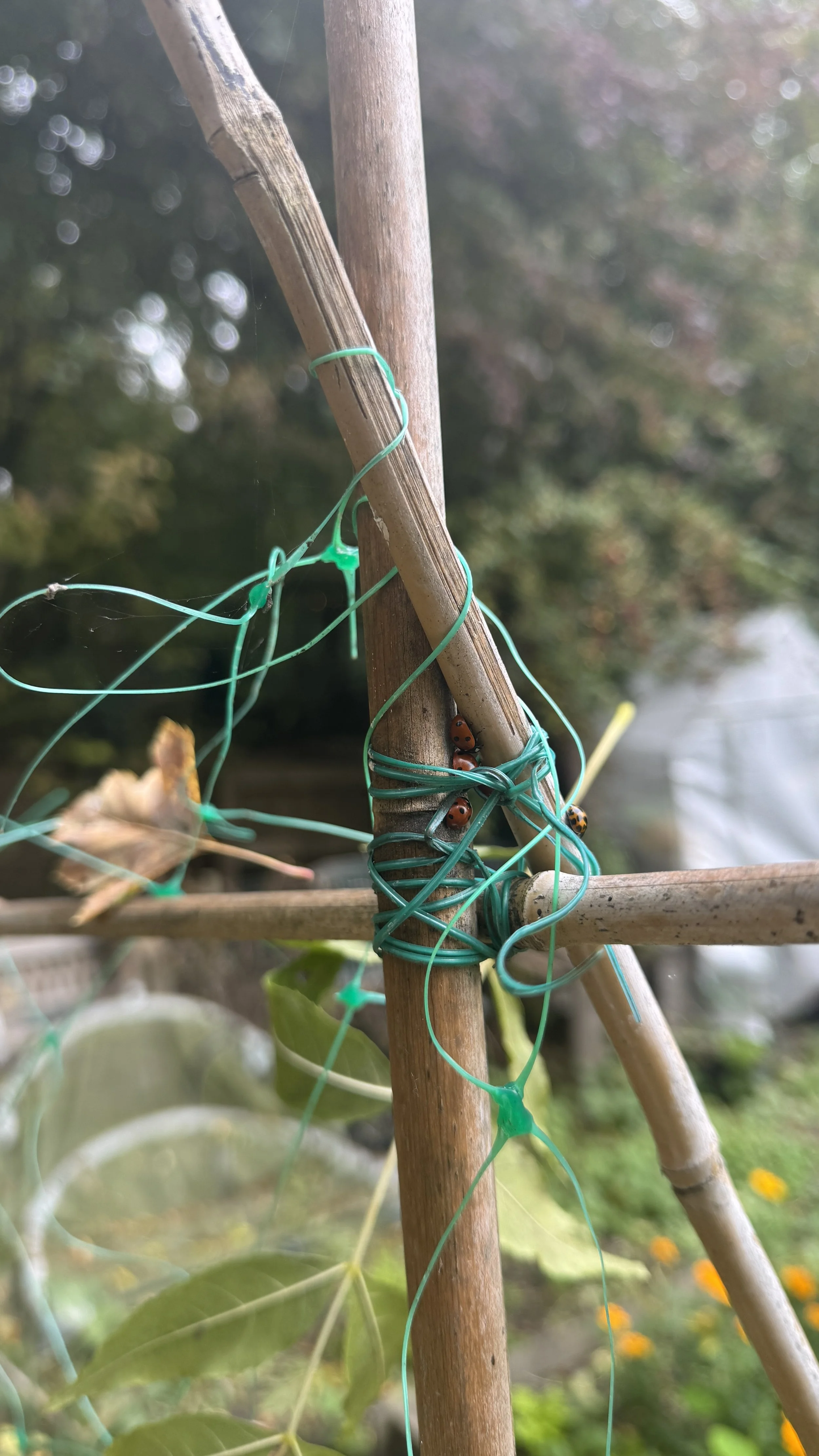
ROOT.
Harvesting Quiet Voices
Session 2 Reflection
A Quiet Winter
This week was very quiet. Three participants joined us around the fire, with two attending and experiencing the gardens for the first time. Much of this time was spent being in the space, rooting to place, sharing stories of our roots and conversing on isolation, and reconnection. Erika said: the space does a lot of the work.
The invitation was simple: to arrive, settle, and notice what winter asks of us. To listen for what continues underground, both within and outside.
Hayley, You and Erica created a beautiful space together yesterday. I felt the power of love and acceptance. Thank you. This experience is still living deep within me.
ROOTING
Winter Energy
We named the season’s medicine — hibernation, recuperation, sleep, safety. This was a space for resting edges, for touching the parasympathetic. Someone mentioned the wise woman: the inner elder who knows when to stop and when to tend the ember instead of the flame.
Stillness had a pulse. Between each log added to the fire, a kind of silence grew that didn’t ask to be filled.
C: I can feel my body softening for the first time in weeks.
Meditation
We turned to the body.
Relax the ears.
Soften the jaw.
Melt the tongue from the roof of the mouth.
Let the spine widen.
Notice the breath.
Notice what moves beneath the breath.
The group sat with eyes closed as the fire cracked in low, continuous percussion. Attention drifted between warmth, sound, and the smell of damp wood.
The meditation folded us into a shared slowness, and collective exhale.
SIT SPOT
Sit spot
Gain a deeper understanding of your environment and what is living there through this simple process.
www.sensorytrust.org.uk/resources/activities/sit-spot
A practice that naturalists use to get an understanding of their environment and what is living there is something called a sit spot. This process can be great for each of us to connect with our own spaces and relax into them. In turn enabling us to become in tune with where we are and what is going on around us.
Sit spot is best done on a regular basis, it is recommended to do this every day, however if this is a challenge we would suggest it is done as often as possible. The more time you can give the more you will get out of it!
This technique will also help with something known as attention restoration (Kaplan and Kaplan), a theory that asserts people can concentrate better after spending time in nature. This can be very helpful if you are about to do a more focussed task.
Reflections from the hearth
After spending almost half an hour with their sit spots, community came together and there was a prolonged shared silence, as if we were trying to find our own language again. Two new participants had joined, there first time at Hawbush. Their presence felt like small shoots through frost, reminders that even in the slow season, community continues to expand.
E: I thought I’d feel like an outsider, but it was immediate — I belong here.
C: Every time I come, I remember what safety feels like in a group.
The Story of the Root Children.
All through the winter the Root Children are asleep underground, but when spring comes Mother Nature wakes them up. Then the Root Children are busy cleaning and painting the beetles and bugs.
'Nothing could date this stunningly illustrated century-old book telling the story of the seasons … Children are enchanted by images like the root children painting a line of ladybirds with pots of red and black paint. Sibylle von Olfers' careful drawings depict Nature scenes halfway between imagination and reality.' -- Juno Magazine, Top Ten Children's Books
Author: The Story of the Root Children is Sibylle von Olfers' (1881-1916) best known work. Her blend of natural observation and use of simple design has led to comparisons with Kate Greenaway and Elsa Beskow.
Shades of green.
After our sit spots, everyone reflected on how green everything is and this song entered the space and so I played it for collective listening. There are so many shades of green in nature. We feel one green, we each recall our own green. But there are thousands of shades. Thousands of expressions of the breathing plants.
Cuttings & Continuance
Outside, we moved into the wellbeing garden to learn and take cuttings yellow raspberry, mint and plum. Even in the hard months, there is work that asks patience: preparing for growth not yet visible. Each stem snipped was an act of quiet hope, a gesture toward spring.
Someone spoke about how cutting and propagation mirror winter’s teaching that pruning, separation, and rest are part of the same cycle that gives return.
A: It feels like giving the plant a chance to start again, but differently.
Compost
We returned to the fire with earth still under our nails. Talk turned to compost — what we were willing to let rot. Words surfaced around fatigue, recalibration, and letting go of overextension.
This wasn’t framed as self-care but as ecology: a practice of returning energy to the soil.
C: I’m learning that rest is a form of participation.
A: Compost doesn’t hurry; it just keeps transforming.
Field Notes
Blanket. Bramble. Birch.
Wise woman. Breath. Fire.
Crab apple tree — standing in witness.
Compost as conversation.
Cuttings on the table, waiting to root.
In awe — Cecilia.
Root • Emerge • Flourish • Gather continues as an exploration of how community takes form through the seasons, how tending the land, and each other, reveals the quiet, ongoing work of belonging.






